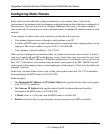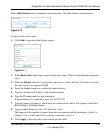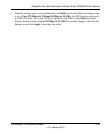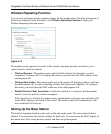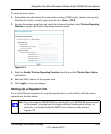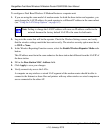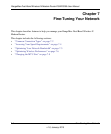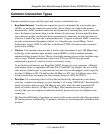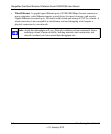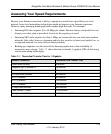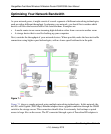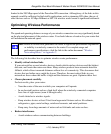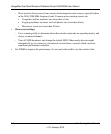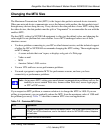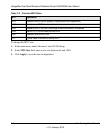
RangeMax Dual Band Wireless-N Modem Router DGND3300 User Manual
Fine-Tuning Your Network 7-2
v1.0, January 2010
Common Connection Types
Common connection types and their speed and security considerations are:
• Broadband Internet. Your Internet connection speed is determined by your modem type,
(ADSL), as well as the connection speed of the sites to which you connect, and general
Internet traffic. ADSL modem connections are asymmetrical, meaning they have a lower data
rate to the Internet (upstream) than from the Internet (downstream). Keep in mind that when
you connect to another site that also has an asymmetrical connection, the data rate between
your sites is limited by each side’s upstream data rate. A typical residential ADSL connection
provides a downstream throughput of about 1 to 3 megabits per second (Mbps). Newer
technologies such as ADSL2+ and Fiber to the Home (FTTH) will increase the connection
speed to tens of Mbps.
• Wireless. Your modem router provides a wireless data throughput of up to 300 Mbps using
technology called multiple input, multiple output (MIMO), in which multiple antennas
transmit multiple streams of data. The use of multiple antennas also provides excellent range
and coverage. With the introduction of the newer WPA and WPA2 encryption and
authentication protocols, wireless security is extremely strong.
To get the best performance, use RangeMax NEXT adapters for your computers. Although
your modem router is compatible with older 802.11b and 802.11g adapters, the use of these
older wireless technologies in your network can result in lower throughput overall (typically
less than 10 Mbps for 802.11b and less than 40 Mbps for 802.11g). In addition, many older
wireless products do not support the latest security protocols, WPA and WPA2.
• Powerline. For connecting rooms or floors that are blocked by obstructions or are distant
vertically, consider networking over your building’s AC wiring. NETGEAR’s Powerline HD
family of products delivers up to 200 Mbps to any outlet, while the older-generation XE
family of products delivers 14 Mbps or 85 Mbps. Data transmissions are encrypted for
security, and you can configure an individual network password to prevent neighbors from
connecting.
• The Powerline HD family of products can coexist on the same network with older-generation
XE family products or HomePlug 1.0 products, but they are not interoperable with these older
products.



